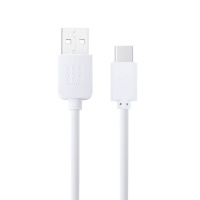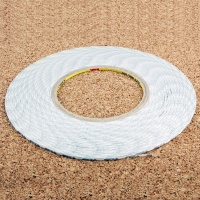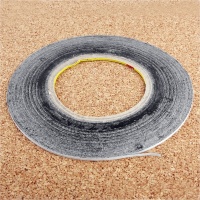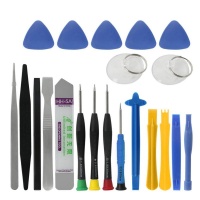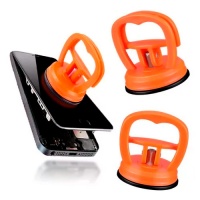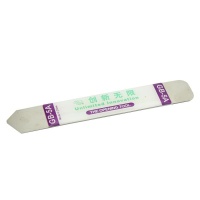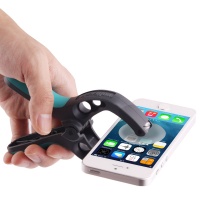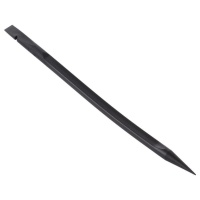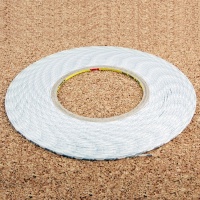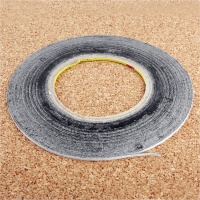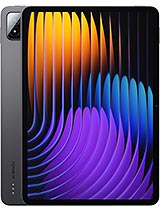 Repair parts Xiaomi Pad 7
Repair parts Xiaomi Pad 7

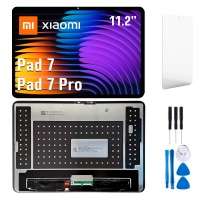
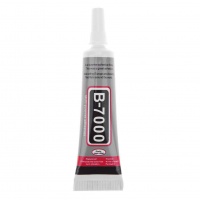
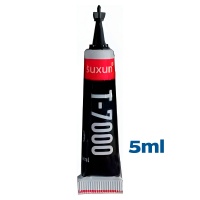
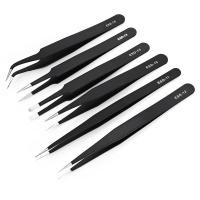
Receive it on monday 5 de january
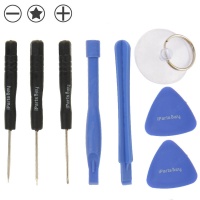
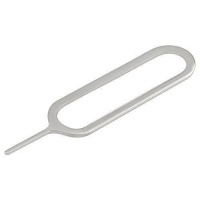
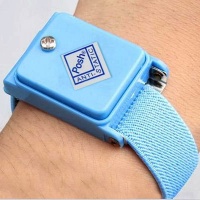
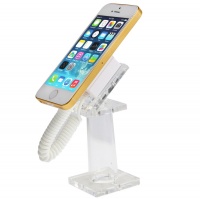
Complete Guide to Spare Parts for Your Xiaomi Pad 7: Screens, Batteries and More
Has your Xiaomi Pad 7 had an accident? Is the battery not lasting like it used to, leaving you in the lurch at the worst possible moment? Don't panic! At iLevante.com, we're experts in giving your devices a new lease of life. This definitive guide, now more comprehensive and detailed, will help you accurately diagnose your tablet's problem and find the exact replacement part you need. Let's get stuck in! 🧑🔧
The Xiaomi Pad 7 burst onto the market as a statement of intent: a powerful tablet with an elegant design and performance capable of competing in the high-end tier. With its impressive screen and smooth performance, it's a fantastic tool for both productivity and entertainment. But like any electronic device that we use daily, it's not immune to the unexpected: bumps, drops, the natural wear and tear of components, and the passage of time. Luckily, its modular design means that most of its components can be replaced, which represents a considerable saving compared to buying a new device and a victory for sustainability. 🌍
The Screen: The Heart and Soul of Your Xiaomi Pad 7
The screen is, without a doubt, the most vital component and, at the same time, the most vulnerable. A clumsy drop from the sofa, an accidental knock in a backpack, or the pressure of a heavy object can spell disaster. If your screen is showing cracks (a "spiderweb" effect), strange coloured patches, vertical or horizontal lines, or if part or all of the panel no longer responds to touch, it's an unmistakable sign that it's time for a replacement.
The Xiaomi Pad 7 comes factory-fitted with a spectacular 11.2-inch IPS LCD screen with a QHD+ resolution of 3200x2160 pixels. This technology guarantees vivid colours and excellent viewing angles. But when you're looking for a replacement, you'll face a range of technologies and qualities. Understanding their differences is key to making a smart purchase.
Types of Replacement Screens: An In-Depth Analysis
- Original Screens: These are the cream of the crop. Manufactured by the same supplier Xiaomi uses, they guarantee 100% compatibility and perfectly replicate the image quality, maximum brightness, colour gamut, and touch response of day one. This is the recommended option for purists and for those who don't want to sacrifice a single bit of the original experience.
- TFT Screens (Budget Quality): TFT (Thin-Film Transistor) is a type of LCD technology that represents the most economical option on the spare parts market. It's a fully functional solution to bring your tablet back to life on a tight budget. However, it's important to be aware of its limitations: colours may appear somewhat "washed out" and viewing angles are narrower compared to the original IPS panel. It's a workhorse option, perfect for a quick and cheap fix.
- INCELL and On-Cell Screens (Mid-to-High Quality): These technologies represent a significant leap in quality. They integrate the touch sensor (digitiser) into the structure of the LCD panel itself, eliminating an intermediate air gap. This results in several advantages: the screen is thinner, the images appear to be "closer" to the surface, and, most importantly, the touch response is much more direct and precise. Incell screens are an excellent middle ground, offering image quality very close to the original at a more contained price.
- OLED/AMOLED Screens (Premium Compatibles): Although the original Pad 7 uses an LCD, the replacement parts market sometimes offers compatible versions with OLED or AMOLED technology. These screens work in a fundamentally different way: each pixel emits its own light. This allows black pixels to turn off completely, achieving an "infinite" contrast and pure blacks that no LCD can match. Furthermore, they are generally more energy-efficient when displaying dark interfaces. If you opt for one of these, you'll be upgrading your tablet's original screen quality, although the cost will be higher.
The Xiaomi Pad 7 Battery: The Engine of Your Productivity 🔋
Your tablet houses a powerful 8850 mAh lithium-polymer battery, designed to endure long workdays or series marathons. Nevertheless, the chemistry of these batteries means inevitable degradation with each charge and discharge cycle. After about two years of use (approximately 500-800 cycles), its ability to hold a charge noticeably decreases. If you identify with any of these symptoms, it's highly likely your battery is asking for a replacement:
- 🔋 Accelerated Draining: You go from 100% to desperately looking for a charger by mid-morning. The battery life has drastically reduced.
- 📉 Percentage Jumps: The battery indicator becomes erratic, suddenly dropping from 60% to 25%, or shutting down when it still showed 20% charge.
- 🌡️ Abnormal Overheating: It's normal for it to get a bit warm when charging or gaming, but if the tablet feels burning hot to the touch during light use, the battery could be the culprit.
- ❗ Sudden Shutdowns: The tablet turns off unexpectedly, even with a seemingly sufficient battery level. This happens because the battery can no longer supply the voltage peak that the processor demands.
- ⚠️ Physical Swelling: If you notice the back cover is bulging or coming away at the edges, act immediately! A swollen battery is the result of an internal chemical reaction generating gases. It is an unstable and potentially dangerous component that must be replaced urgently by a professional.
OEM Batteries: Original Quality without the Extra Cost
When searching for spare parts, you'll often come across the term "OEM Battery" (Original Equipment Manufacturer). This is not a copy or an imitation. An OEM is, in many cases, the very same factory that produces the batteries for Xiaomi's assembly line. The only difference is that these batteries are sold without the brand's logo. Therefore, you are purchasing a part with the same quality of materials, the same capacity (mAh), the same safety circuits, and the same lifespan as the original, but at a significantly more competitive price. At iLevante.com, we trust in OEM quality because it offers maximum reliability without inflating the final price.
Detailed Guide: How to Change the Xiaomi Pad 7 Battery?
Changing the battery is a precision task that requires patience and the right tools. If you don't feel confident, it's better to go to a technical service. If you're feeling brave, here's a more detailed guide:
- Preparation and Safety: Completely turn off the tablet and, if possible, let the battery discharge below 25% to minimise risks. Work on a clean, clear, and well-lit surface.
- Apply Heat: Using a heat gun on its lowest setting or a hairdryer, gently and constantly heat the edges of the back cover. The goal is to soften the powerful adhesive that seals it. Don't overdo the heat in one spot, to avoid damaging internal components.
- Careful Opening: Place a strong suction cup near one of the corners and pull gently to create a small gap. Insert a thin plastic pick into it. Slide the pick around the entire perimeter, adding more picks if necessary, to cut through the adhesive. Never use metal tools, as you will scratch the aluminium chassis.
- Disconnection: Once the cover is free, open it carefully like a book. Locate the battery connector on the motherboard (a small press-fit connector). Use a plastic spudger to disconnect it with a vertical motion. This is the most important step for safety.
- Removing the Old Battery: The original battery is stuck to the chassis with very strong adhesive strips. With extreme care, use a wide plastic spatula to slowly pry it up. You can use a few drops of isopropyl alcohol around the edges to help dissolve the glue. NEVER puncture or bend the battery.
- Installation and Closing: Place the new battery in its housing. Connect its flex cable to the motherboard until you hear a click. Remove the protective films from the new adhesive strips (if the cover requires them) and press the back cover down firmly to seal the device again.
- Calibration: Once installed, charge the new battery to 100% without interruption and, once charged, continue to use it for at least another hour. Then, use the tablet until it turns off by itself due to lack of battery. Finally, charge it back to 100% without interruptions. This full cycle calibrates the sensor and ensures the displayed percentage is accurate.
Back Covers: A Facelift for Your Tablet
The aluminium back cover is not just a key aesthetic element; it also acts as a heat sink and a protective shield for the delicate internal components. If it's been dented from a fall, scratched by keys, or you simply want to freshen up its look, replacing it is an excellent way to make your tablet look brand new. The Xiaomi Pad 7 is available in elegant finishes like Black, Blue, and Green. At iLevante.com, we strive to offer you all the original colours. As you may have guessed, the process to change it is identical to the first steps of replacing the battery, as it is the first barrier to accessing the device's interior.
Analysis of Other Key Spare Parts for the Xiaomi Pad 7
Beyond the usual suspects, other components can fail with use. Here we delve into the 4 most relevant replacement parts:
1. USB-C Charging Port Connector
Detailed Diagnosis: The most common problem is intermittent charging. You have to "jiggle" the cable's position to get it to charge. Other symptoms include excessively slow charging (a false charge), the inability to transfer data to a PC via cable (the computer doesn't recognise the device), or simply not charging at all. Before buying, inspect the port with a torch. Often, the problem is just compacted dirt or lint. Try cleaning it carefully with a wooden toothpick or a can of compressed air. If that doesn't work, the port is internally damaged. The Solution: Fortunately, this component, often called a charging flex or dock connector, is a modular part that usually includes the USB-C port, the main microphone, and sometimes the headphone jack. It is replaced relatively easily once the tablet is open.
2. Rear and Front Camera
Detailed Diagnosis: A camera failure can manifest in several ways. Photos are blurry and won't focus (possible autofocus motor failure). The camera app closes by itself or shows an error message. Or the most obvious symptom: the app opens, but the screen stays black. Don't rule out a software issue: first, try clearing the cache and data of the Camera app in the settings. If the problem persists, or if the external lens glass is physically broken, you'll need a replacement part. The Solution: The Pad 7's camera modules (13MP main and 8MP selfie) are "plug and play" components. They are individual parts that connect to the motherboard via a small flex connector and can be replaced if they are faulty.
3. Speakers (Stereo System)
Detailed Diagnosis: The most obvious symptom is distorted sound, with a metallic "crackle" or "buzz," especially at high volumes. It can also happen that the volume is extremely low or one of the speakers emits no sound at all. The cause is often the ingress of dust or metallic particles that damage the membrane, or a knock. To rule out a software fault, check that sound works correctly with headphones. The Solution: The Xiaomi Pad 7 features a stereo speaker system for an immersive experience. If one of the modules fails, it can be replaced individually to restore the original audio quality.
4. Interconnect Flex Cable (Main Flex)
Detailed Diagnosis: This is a more complex fault to diagnose. The "main flex" is like the central nervous system that connects the main motherboard (the brain) to the secondary sub-board (where the charging port, vibrator, etc., are located) and the screen. Damage to this cable, often from a previous poorly-executed repair or a very hard knock, can cause strange and varied symptoms: the screen doesn't turn on but the tablet vibrates when connected to the charger, the touch function doesn't work, the microphone doesn't pick up audio... The Solution: If you've tried changing the screen or the charging port and the problem persists, the interconnect flex cable is the next suspect. Its replacement requires almost a full disassembly of the device, but it can resurrect a tablet that seemed to have a much more serious and expensive motherboard fault.
It's Not All Hardware! Advanced Software Diagnosis 🖥️
From an experienced technician's perspective, it's a cardinal sin to always blame a physical component. Xiaomi's operating system (formerly MIUI, now HyperOS on the Pad 7) is complex software and, as such, can have bugs that perfectly mimic a hardware failure. Learning to distinguish them will save you time and money.
Software Diagnosis Steps
- Safe Mode: If your tablet has suddenly become slow, restarts on its own, or the battery drains for no reason, a third-party app could be the culprit. Booting into Safe Mode disables all non-factory apps. If the problem disappears in this mode, you know the cause is an app you recently installed. Uninstall it and try again.
- Wipe Cache Partition: After a major operating system update, residual temporary files can sometimes remain and cause conflicts, resulting in freezes or battery drain. Accessing the Recovery Mode and performing a "Wipe Cache Partition" is a safe operation (it doesn't delete your personal data) that solves many of these problems.
- The Last Resort: Factory Reset: If all else fails, a factory reset will return the tablet's software to its initial state, as if you just took it out of the box. This eliminates most software problems, but be warned! it will erase all your personal data (photos, apps, files). Make sure you perform a full backup before proceeding. If the problem persists after a factory reset, then you can be almost certain that it is a hardware fault.
At iLevante.com, our mission goes beyond just selling you a spare part. We want to empower you with the knowledge to make the best decision for your Xiaomi Pad 7. Explore our extensive catalogue of parts and tools, and give your fantastic tablet the new lease of life it deserves!

